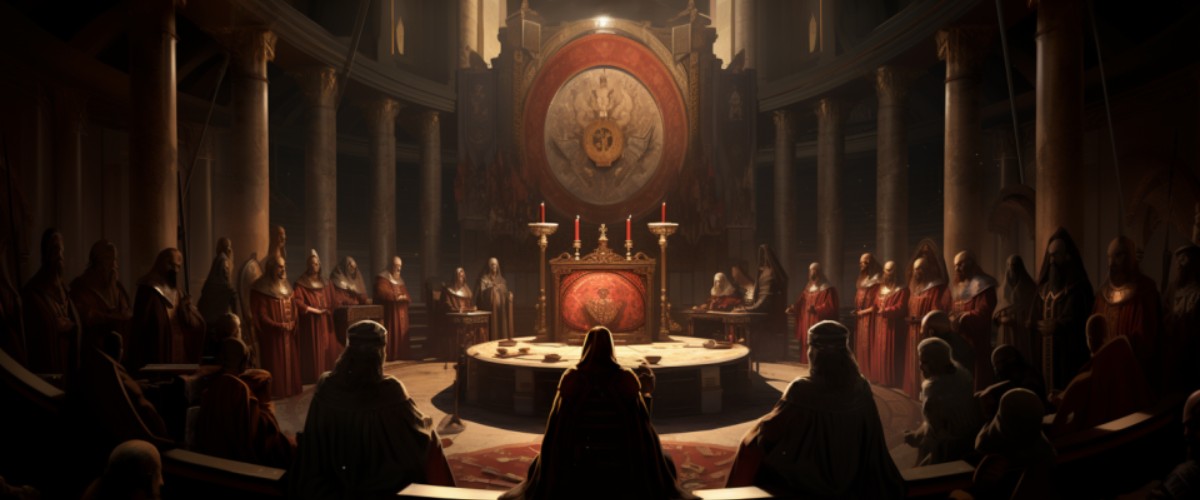The Council of Nicaea, convened in 325 AD, plays a pivotal role in shaping Christian theology and doctrines, establishing uniformity and addressing numerous controversies that swirled through the early Christian community.
Significance in Context
The Council, located in Nicaea (now Iznik, Turkey), was spearheaded by Emperor Constantine I, resulting in a theological and ecclesiastical transformation not only within the Byzantine Empire but also influencing Christianity globally. This assembly sought to unify varied Christian beliefs under a cohesive, imperial banner, laying a foundational stone for the doctrines of one of the world’s largest religions.
Background
Precipitating Factors
- Arian Controversy: A critical factor propelling the convocation was the Arian controversy, concerning the divine nature of Jesus Christ.
- Ecclesiastical Disunity: Various Christian sects, each with distinct doctrines and practices, created discord and fragmentation within the early Church.
Key Personalities
- Emperor Constantine I: The first Roman Emperor to convert to Christianity, aiming to unify his empire religiously.
- Arius: A presbyter from Alexandria, propounding the belief that Jesus Christ was subordinate to God the Father.
- Alexander of Alexandria: Opponent of Arius, advocating for the co-equal and co-eternal nature of Jesus Christ and God the Father.
Major Happenings
- Convening of Bishops: Over 300 bishops from across the empire convened, although primarily representing the East.
- Arianism Debate: Intense debates around the nature of Jesus Christ, confronting Arianism.
- Nicene Creed: Formation and adoption of the Nicene Creed, asserting the consubstantiality of Jesus Christ with God the Father.
- Date of Easter: Uniform celebration date for Easter was established, disentangling it from the Jewish Passover.
Immediate Outcomes
Social and Ecclesiastical Ramifications
- Orthodox Foundation: Establishment of orthodox Christian doctrines, which refuted Arianism.
- Ecclesiastical Structure: Establishment of a hierarchical structure, conferring a particular primacy to the Bishop of Rome.
- Persecution: Post-council period saw punitive measures against non-adherents to the Nicene Creed.
Geopolitical Implications
- Empire Unity: Attempt to align the Byzantine Empire under a unified religious belief, bridging social and political gaps.
Long-term Impact
Enduring Theological Impact
- Christian Doctrine: The Nicene Creed became a cornerstone for Christian doctrine, shaping beliefs and liturgies.
- Trinitarian Theology: Reinforcement and establishment of Trinitarian theology within mainstream Christianity.
Expanding Influence
- Future Councils: Set a precedent for future ecumenical councils, aiming to resolve theological disputes.
- Global Christianity: Became foundational in spreading a cohesive Christian doctrine across continents in subsequent centuries.
Conclusion
The Council of Nicaea in 325 AD represents a watershed moment in the establishment and propagation of Christian doctrine, creating a theological framework that continues to inform Christian belief and practice today. By harmonising conflicting doctrines, the Council not only impacted contemporaneous theological discourse but also affected political and social structures within the Byzantine Empire and beyond.
Its enduring significance resonates in contemporary Christianity, as the Nicene Creed, and the theological tenets ratified therein, continue to be recited and revered across various Christian denominations worldwide. Consequently, the Council’s decisions, formulated in an era of theological turmoil, have inexorably shaped the trajectories of societies and nations through the medium of religious belief, dogma, and institution.








